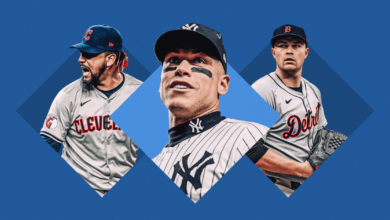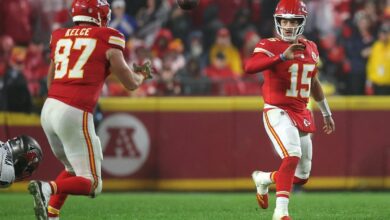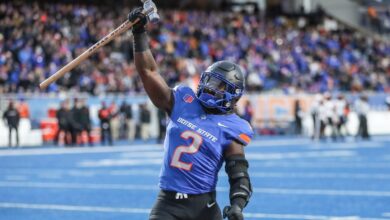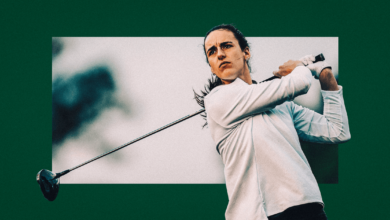The stratospheric rise of Lionel Messi’s pink shirt
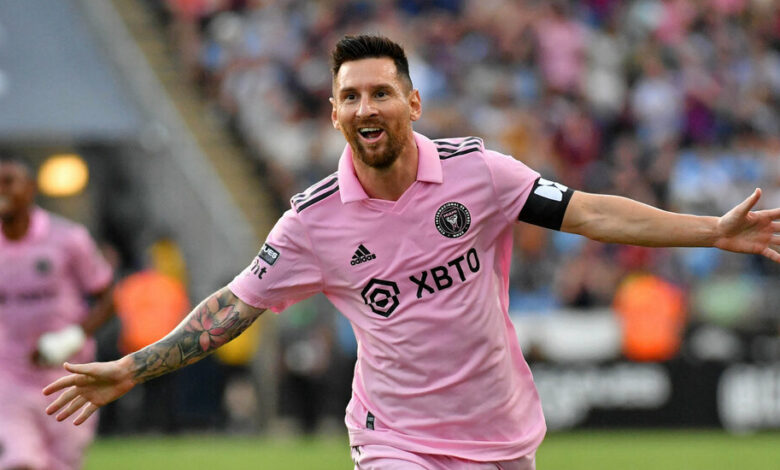
Suddenly, after a single summer, the pink shirt is everywhere. It has become almost impossible to obtain, but there it is, paradoxically, on the backs of thousands of fans filling American stadiums, hanging from market stalls in Buenos Aires and Bangkok, a vivid flash on almost every pitch where children gather to play football in England.
That the shirt has become the world’s most popular sporting item, seemingly overnight, is down to a simple, capitalist equation: the result of an irresistible combination of one of the most recognisable and beloved athletes of his generation, a striking, exotic colour and the ruthless efficiency of Southeast Asian textile factories.
But somehow, few saw it coming. Tor Southard was better placed than most, but even he was caught off guard. As Adidas’ senior director of North American soccer, he had been receiving emails from colleagues for almost a year asking if the company’s biggest star, Lionel Messi, would join Inter Miami, another Adidas client.
As far as he knew, it was just a rumor. Like the rest of the planet, Southard only learned about it on June 7, the day Messi announced his intentions in a rare interview with two Spanish news organizations.
For many, the first question was the football question. Why did Messi, the greatest player of his generation and perhaps the greatest of all time, leave Europe’s elite clubs and leagues six months after winning the World Cup with Argentina to join a team that was among the worst in the comparative hinterland of America’s top competition, Major League Soccer?
For Southard and Adidas, there was a much more pressing matter. Within days of Messi’s announcement, the company had received nearly 500,000 requests from stores and suppliers for shirts in Miami’s soft, electric pink. It’s a specific fabric and a specific shade: Pantone 1895C“It wasn’t like it was white, and we had inventory that we could reuse,” Southard said.
Even though they couldn’t have predicted what a phenomenon the shirt would become or how many people would want to get their hands on one, Southard and his colleagues had an inkling of what would happen.
Adidas would need more of that material. A lot more.
‘Priority #1’
On the day Messi announced he would sign for Inter Miami, Adidas had a supply of Inter Miami shirts in stores and warehouses across the United States. It didn’t last long. The shirts sold out so quickly that Southard said it was as if the stock just “evaporated.”
Making more of the fabric — and quickly — was just the first step. Although Adidas wouldn’t start selling official Messi shirts until his contract was formally signed on July 15, it placed orders for large rolls of the pink fabric needed to make them within 24 hours of his interview on Spanish television in the first week of June.
The risk, of course, was that the deal would still fall through. “It’s a trade-off for speed,” Southard said.
Under normal circumstances, retailers order shirts up to nine months in advance. Major sportswear brands, such as Adidas and Nike, typically prefer to produce large batches of team clothing, rather than producing to meet demand, as fast fashion chains often do.
Given the number of what the industry calls “chase buys” – a sudden influx of orders in unexpected volumes – for Messi’s Inter Miami shirt, Adidas knew its usual strategy wasn’t going to work.
That was something it had learned from experience. In 2021, when Cristiano Ronaldo returned to Manchester United, one of the handful of retailers Adidas works with, Fanatics, asked for an extra million shirts. A year later, after Messi helped Argentina win the World Cup, Adidas had to produce and ship an extra 400,000 Argentina national team shirts in three months.
Launching pink shirts with Messi’s name and number 10 immediately became Adidas’ “top priority worldwide”, according to Southard.
To streamline the process, the company sourced the pink, recycled polyester fabric for the shirts as close as possible to the factories in Southeast Asia that would make them. Orders for other details, such as logos and crests, were expedited to other facilities, sometimes skipping production of apparel for other Adidas teams. To speed up shipping times, the first batches of Messi shirts were shipped in small shipments almost as soon as they came off the production line.
The frantic production effort worked. Adidas initially told retailers to start selling shirts with a promise of delivery on October 15. But the first editions arrived in the United States on July 18. They were shipped directly to Miami, where demand was greatest.
They sold out almost immediately.
‘Everyone has a fling’
On a street corner in Miami’s wealthy Brickell neighborhood, two young men set up a pop-up Messi store one night last month, their racks groaning with Inter Miami shirts in pink and an alternate version — black with pink piping — that the team wears on the road. This was the work of the imaginatively titled Messi Miami store.
The name sounds official. The online store looks that way too. It sells two versions of the Messi shirt, as most sportswear manufacturers do now: a “player version” made of high-quality material and an athletic cut, and a “replica” designed for fans whose bodies may not have the exact dimensions of a top athlete.
The Messi Miami Shop, however, is in no way affiliated with Messi, Inter Miami, or Adidas. (It is, however, a store.) Instead, the jerseys came from a contact in Thailand, purchased for $10 each. “This is Miami,” one of the vendors said. “Everybody has a connection.” And a markup: The stall was selling the jerseys for $25 for a children’s edition and as much as $65 for an “authentic,” non-authentic adult version of the team’s black jersey.
The sellers, who for obvious reasons declined to give their names, said they had sold about 30 in a few hours. But they are not the only ones rushing.
A few nights earlier, outside Exploria Stadium in Orlando, Florida, another group of street vendors had been doing their own business in Messi jerseys. Messi wasn’t playing that night—he missed several weeks of the season with injury—but Inter Miami was in town, and plenty of fans were willing to pay $40 for a pink jersey with his name on it, even if it was sloppily stitched and plucked from a backpack.
Despite Adidas’ best efforts to get official Messi shirts into stores as quickly as possible, demand for them (in whatever version) is so high that there are many counterfeit products on the market worldwide to make up for the shortage.
While the company says it has largely cleared the backlog of orders, it is still finding that it is selling the shirts much faster than it can produce them, and not just in the United States.
In Buenos Aires, where Messi’s status as a national treasure was sealed by victory in the World Cup, pink shirts are on sale in shop after shop and kiosk after kiosk along Calle Florida, one of the Argentine capital’s bustling shopping streets, and on the stalls of the bustling San Telmo market. At some vendors, the counterfeit shirts cost around $50.
In Europe, where tribal ties to local clubs are deeply ingrained, Miami shirts have suddenly become commonplace. At a training session for primary school children in Manchester, England, last month, the usual concentration of Manchester United, Manchester City and Liverpool kits was strewn with half a dozen pink Inter Miami shirts, each bearing Messi’s name.
It’s hard to overstate the scale of demand. Official sales have exceeded every benchmark Adidas could have imagined, Southard said: beyond the frenzy that accompanied David Beckham’s move to the Los Angeles Galaxy in 2007; beyond the rush caused by Ronaldo’s return to Manchester United in 2021; beyond the clamor for Messi’s Argentina shirt in the wake of Qatar 2022.
Inter Miami is now the best-selling Adidas football shirt in North America, ahead of all five of the famous European clubs that the brand traditionally regards as the crown jewels of its portfolio: Manchester United, Real Madrid, Juventus, Bayern Munich and Arsenal.
Since July, Fanatics, which dominates the sportswear market in the United States, has sold more Messi shirts than any other soccer player, and any athlete except Philadelphia Eagles quarterback Jalen Hurts. No player, in any sport, has ever sold more shirts on the site in the first 24 hours after switching teams than Messi did in July.
His cinematic arrival in MLS — with a late winner on his July 22 debut — came too late to save Inter Miami’s season. The club will miss the playoffs, which begin Wednesday. Messi won’t wear pink again until next year.
But that has done little to dampen his impact. Inter Miami’s matches have attracted record crowds since he arrived. The team’s ticket prices for next season have skyrocketed. Adidas is confident it has enough of the next edition of Messi’s shirt — due for release in February — in production to meet demand.
For many fans and retailers, it couldn’t come too soon. The shirt has become so coveted, so scarce, that even Beckham himself — one of the most famous footballers of his generation, a global celebrity and, as co-owner of Inter Miami, Messi’s boss — has found it hard to get his hands on one.
It has happened to him several times that he wanted to give a pink Messi shirt as a gift to a friend or colleague, but like everyone else he was told that he had to wait for it.
Alan Blinder And Patricia Mazzei contributed to the reporting from Buenos Aires.

